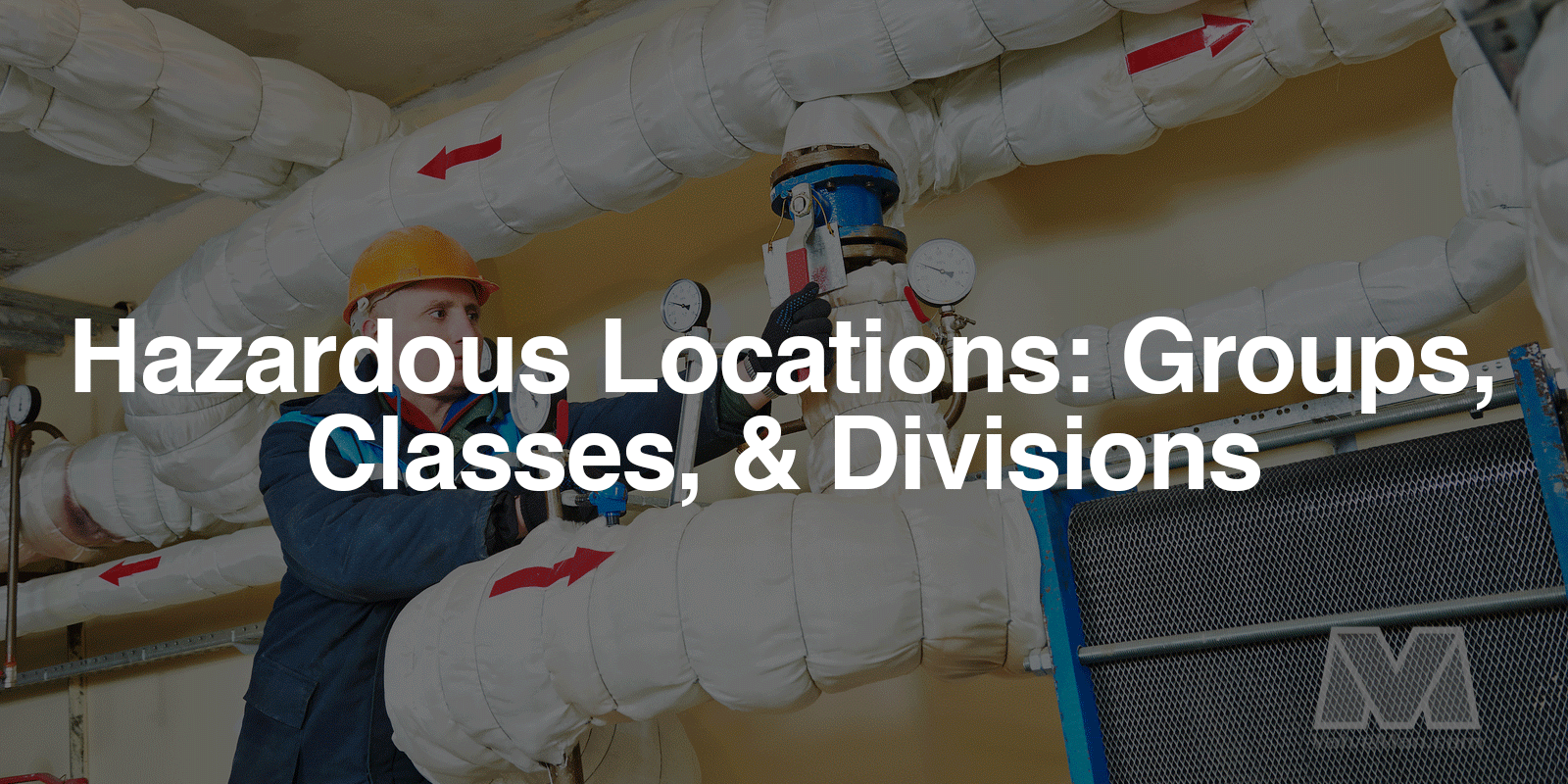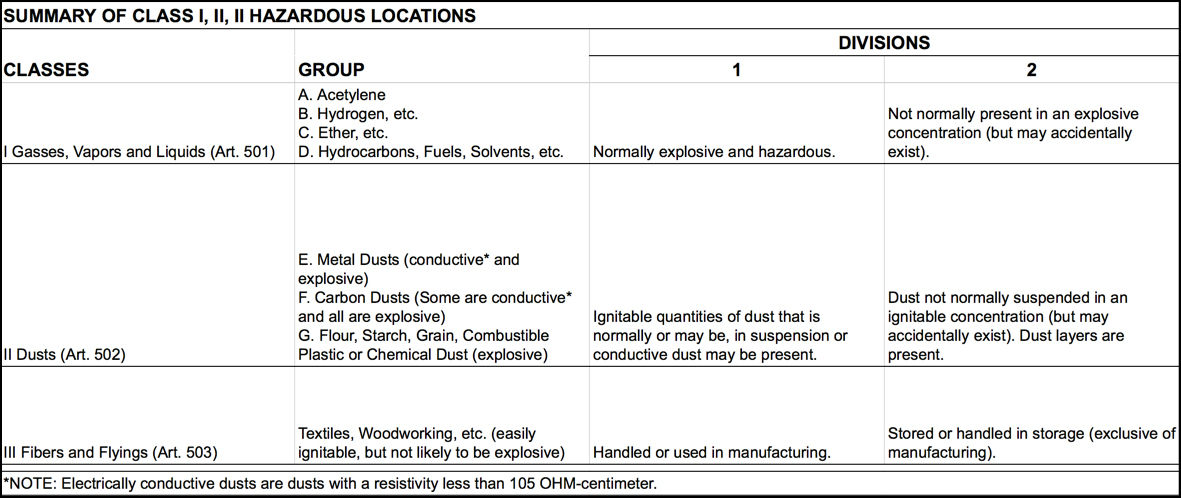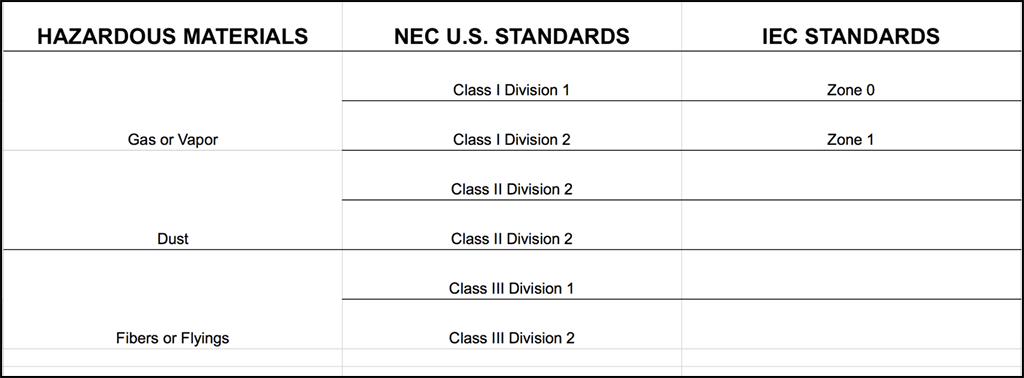Hazardous Locations: Groups, Classes, and Divisions
Posted by Russ Bailey on Mar 28th 2016

Staying safe in the workplace--or keeping job site conditions safe--hinges upon a knowledge of Hazardous Locations, what this classification means, and how it all breaks down. Understanding the nature of these particular conditions may be of the utmost importance to anyone working with electricity, such as someone installing, repairing, or replacing something electrical, like a solenoid valve, especially in workplace environments where fire and explosion threats are prevalent. In essence, those areas in which fire or explosion dangers may exist--due to the existence of flammable gases, liquids, vapors, or other combustible particles, like fibers or dust, in large, concentrated quantities--are called hazardous locations. These locations and conditions are identified by classes, divisions, and groups.
Groups, Classes, and Divisions with Hazardous Locations

Hazardous locations are broken down into three sections known as Classes: I, II, and III. Each Class's rating is dependent upon specific conditions which are further determined by divisions and groups. Otherwise, classes are identified as follows:
- Class I: Gasses, vapors, and liquids. These flammable materials may exist in concentrations--particularly in the air--sufficient to cause an explosion if ignited. This classification includes several groups concerning Groups A) Acetylene, B) Hydrogen, etc., C) Ether, etc., D) Hydrocarbons or similar, such as fuels or solvents. These groups are further classified under Divisions I: Deemed explosive and hazardous, and II: Gasses, vapors, and liquids are not usually present in an explosive consistency, but a potential for an accident still exists.
- Class II: Dust. This classification may refer to any ignitable "dust-like" substances which may be present in an area's atmosphere in concentrations which could be combustible, and/or explosive. These include Groups E) Metal dusts which are explosive or conductive, F) Carbon dusts, which may not be conductive, though all are explosive, and G) Combustible plastic or chemical dusts, and flour, starch, or grain. These are all flammable but not conductive. Division I includes quantities of ignitable dust, normally found suspended in the atmosphere or conductive dust, which may be present. Division II refers to dust that is not normally suspended in ignitable quantities, but may exist anyway.
- Class III: Fibers and Flyings. This class refers to ignitable particles (such as wood shavings) that exist, or may exist, in combustible quantities posing fire hazards, but not explosion hazards. Groups may include Woodworking, Textiles, and similar industries. However, in this case, the divisions are more important. Division I concerns locations where machinery produces ignitable fibers or flyings, and/or locations--such as storage--where said material is otherwise handled. Division II describes locations specifically different from production areas, but where said material is stored or handled, anyway.

Stay Safe in Hazardous Locations
Hazardous Locations, because of their very nature, require special wiring and conduit that meets regulations and codes designed to prevent accidents and fatalities caused by electrically ignited fires and/or explosions. General purpose electrical wiring and conduit is not rated for such areas, and is potentially dangerous. Likewise, general purpose valves are not rated for hazardous locations, either. Valves being utilized in hazardous locations are typically made of brass or other non-conductive materials. At the ValveMan valve store, ValveMan.com, we want you to be informed, because we want you to stay safe! We've been in the valve business for over 50 years, and we know all about hazardous locations and which materials are safe to use within them, as well as the guidelines for establishing these safety regulations. That's because we are a major distributor of industrial grade valves. In fact, all we sell are valves--and that's what separates us from the competition. It's simply what we do, and we do it better than anyone else.

 888-825-8800
888-825-8800








